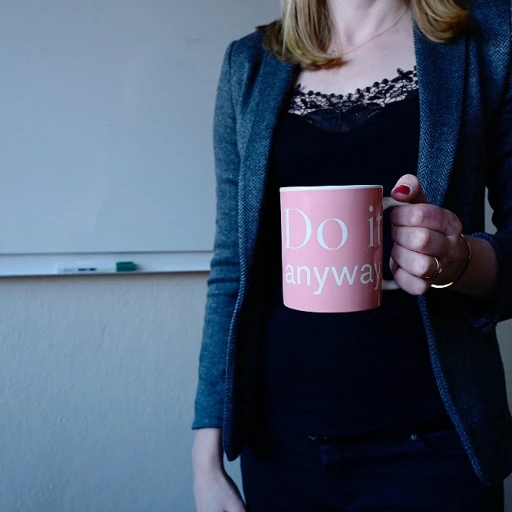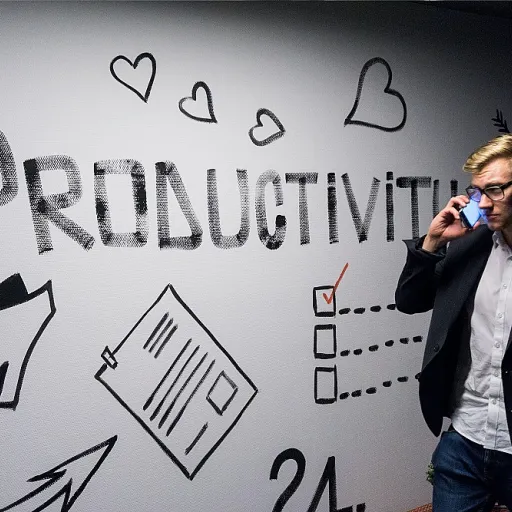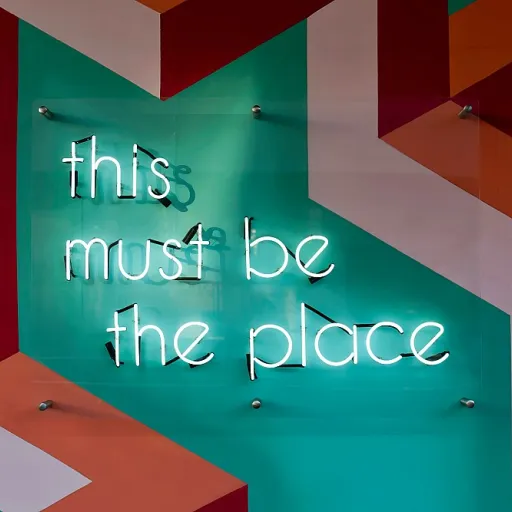
Understanding the Pause Approach
Unraveling the Pause Method
In a fast-paced world where anxiety and stress appear to be constant companions, the concept of pausing might seem counterintuitive. Yet, the pause method is gaining traction as a valuable practice to improve the quality of life by providing a much-needed break for the brain and nervous system.
Pausing is more than simply taking a moment to catch your breath. It's about embracing a practice of intentional breaks that engage the prefrontal cortex—our brain's decision-making hub. This approach, backed by clinical experience and evidence-based studies, suggests that inserting these intentional pauses into our daily routines can lead to long-term improvements in mental and emotional well-being.
As parents and professionals, integrating pauses can help us make better decisions, respond more calmly to unexpected events, and interact with our children and families with a greater sense of presence and care. In today's world, where demands are high, and time is limited, learning how to pause effectively can be transformative both in personal life and in maintaining work-life balance. Reducing stress with work-life balance becomes more achievable when the pause practice is incorporated into daily habits.
The pause method might raise some questions initially. What does a pause look like? How long should it be? These are common queries faced when embarking on this journey toward a more balanced life. While there are no one-size-fits-all answers, understanding the science behind taking breaks can offer insight and confidence to those new to this approach.
Ultimately, pausing is about seeing the big picture and making decisions that benefit us in the long term. As we explore real-life applications, we'll see how the pause method can be implemented both at work and home to enrich our time with friends, colleagues, and loved ones.
The Science Behind Taking Breaks
Exploring the Impact of Breaks on Our Well-Being
Understanding the science behind taking breaks can transform how we view work-life balance. Pauses throughout the day are not just a luxury; they are a necessity for maintaining our well-being. The "pause" approach is a powerful concept that focuses on taking short, intentional breaks from tasks to recharge. When we neglect to pause, we place undue stress on our nervous system. This constant pressure can heighten anxiety and impact how we react to everyday questions and decisions. Implementing a pause method can help calm our brains and reduce stress. So why is taking a pause so beneficial? It's crucial to consider how our brain takes information. The prefrontal cortex, responsible for high-level functions like decision-making and problem-solving, works more efficiently when we give it time to rest. A short break can refresh the mind, improve focus, and ultimately lead to better, more informed decisions. Consider the long-term effects of maintaining a frantic pace without pauses. Over time, this can negatively affect both our physical health and mental clarity. Clinical experience and evidence-based studies have shown that a strategic break at work or home can enhance the quality of life for everyone involved, including parents, children, and families. Viewing the big picture, implementing daily pauses becomes a practice of self-care. It is not just about performing better in the short term but also about making sustainable lifestyle changes that support long-term well-being. By practicing the pause approach, individuals and families can navigate life's demands with more resilience and grace. Incorporating moments of rest and reflection into our lives isn't just beneficial—it's essential. This practice can significantly improve how we spend time with our loved ones, helping us be more present and responsive to their needs. To dive deeper into crafting a work-life balance that integrates effective breaks, consider visiting crafting a sleep schedule for 12 hour night shifts, which provides helpful insights into managing energy and health during demanding work schedules.Implementing the Pause Approach at Work
Creating Space for Pauses at the Workplace
Implementing the pause approach at work requires a strategic and thoughtful execution to truly enhance work-life balance. Amidst the hustle and bustle of the office environment, taking mindful breaks is crucial for sustained productivity and mental well-being. The pause method involves intentionally scheduling breaks to engage your prefrontal cortex, helping it to refresh and manage daily tasks more effectively.- Scheduled Pauses: Allocate specific times during the workday for short, mindful breaks. For instance, taking five minutes to breathe deeply and clear your mind can reduce anxiety and increase attention spans.
- Mindful Movements: Engaging in physical activity during breaks, such as a brief walk or stretching, stimulates the brain and the nervous system, promoting calmness and improved decision-making.
- Utilizing Break Rooms: Designate spaces where employees can practice the approach with minimal distractions to gain perspective and view the big picture of their responsibilities.
Encouraging a Supportive Culture
For the pause approach to thrive, fostering a supportive workplace culture is paramount. Leaders and managers play a crucial role in demonstrating that taking breaks is a valued practice. Evidence shows that when organizations prioritize employee well-being, there is a direct impact on long-term job satisfaction and quality of life.- Lead by Example: Encourage leaders to model behavior by taking regular breaks themselves. This practice assures employees that it's acceptable to step back and spend time in self-care during the workday.
- Informative Workshops: Offering workshops can boost understanding of the benefits of pausing, backed by both clinical experience and evidence-based studies.
- Open Conversations: Create spaces for employees to express feelings of overwhelm and discuss strategies to incorporate pauses. Engaging questions can help initiate discussions and integrate these techniques successfully in daily routines.
Integrating Mindful Breaks at Home
Nurturing a Harmonious Home Environment
Integrating mindful breaks at home isn't just about pulling back from our work; it’s about embracing the pause as a daily practice, benefiting the quality of life for you and your family. It’s a step towards reducing anxiety and fostering a nurturing environment for children and parents alike. Taking breaks at home can help one focus on the big picture of life, allowing the brain to recharge and the nervous system to reset. This provides the best care for your well-being in the long term. Evidence-based research highlights how regular pauses can enhance the functionality of the prefrontal cortex—the area responsible for decision-making and emotional regulation. Here’s how you can seamlessly implement the pause method at home:- Morning Rituals: Start your day with a calm, peaceful pause. Engage in brief meditation or breathing exercises to set a positive tone for the day. This will help respond better to stress and anxiety.
- Quality Time with Family: Spend intentional, undistracted time with your family. This enriches children's lives and supports parental bonding, creating stronger family ties in the process.
- Evening Downtime: As the day winds down, set aside the time to unplug from tech devices. Allow your brain to rest and recover, ensuring a restful night ahead.
Overcoming Challenges in Pausing
Addressing the Hurdles to Embracing Breaks
Implementing the pause method involves facing several challenges, both mentally and emotionally. It’s natural for the brain to rebel against any change in routine, especially when it feels like valuable time can be spent working rather than resting. Understanding these challenges is crucial for successful integration of breaks.- Mental Roadblocks: Many professionals struggle with the notion that taking a pause will result in decreased productivity. However, evidence from clinical experience shows that the opposite is true. Pauses activate the brain’s prefrontal cortex, boosting creative thought and problem-solving abilities.
- Emotional Resistance: For some, anxiety arises from the need to constantly be "on" or engaged in work tasks. The fear of missing out or falling behind can be intense. Addressing these feelings means shifting perspective to see breaks as a practice of self-care rather than a waste of time.
- External Pressures: Parents and workers often face pressure from employers or family members. Parents worry about spending time with their children, while companies may prioritize output over the health of their staff. Navigating these pressures takes deliberate decision-making and can benefit from research into quality life benefits.
- Overcoming the Urge to Skip: One of the most challenging aspects of adopting a pause is the desire to skip them entirely. Starting small by setting short, scheduled pauses can help adjust your nervous system to this new rhythm and respond to stress with calm.
Real-Life Success Stories
Real-Life Transformations Through the Pause Method
Incorporating the pause method into daily routines has led to significant improvements in work-life balance for many individuals. Let's explore some real-life examples that highlight the effectiveness of this approach.
One professional, a software developer, found that taking regular pauses during intense coding sessions helped reduce anxiety and improve focus. By stepping away from the screen and engaging in brief mindfulness exercises, they noticed a marked improvement in their ability to respond to complex problems. This practice not only enhanced their productivity but also contributed to a calmer state of mind, benefiting their overall quality of life.
Another example involves a parent juggling work and family responsibilities. By integrating mindful breaks into their daily routine, they were able to spend more quality time with their children. These pauses allowed them to be more present and attentive, strengthening family bonds and reducing stress. The evidence-based practice of taking breaks proved to be a valuable tool in managing the demands of both work and home life.
In a clinical setting, healthcare professionals have also embraced the pause method. By taking short, intentional breaks, they found that their ability to provide the best care improved significantly. These pauses helped reset their nervous system, allowing them to approach patient care with renewed energy and focus. The long-term benefits of this practice were evident in both their professional performance and personal well-being.
These stories illustrate how the pause approach can be a powerful tool in achieving a balanced life. By understanding the science behind taking breaks and implementing them effectively, individuals can experience profound changes in their work and personal lives. Whether it's reducing anxiety, improving decision-making, or enhancing family relationships, the pause method offers a practical solution for those seeking a more harmonious existence.












